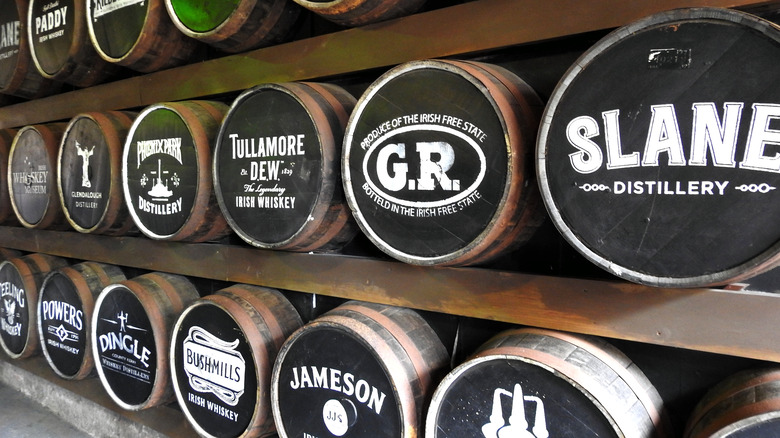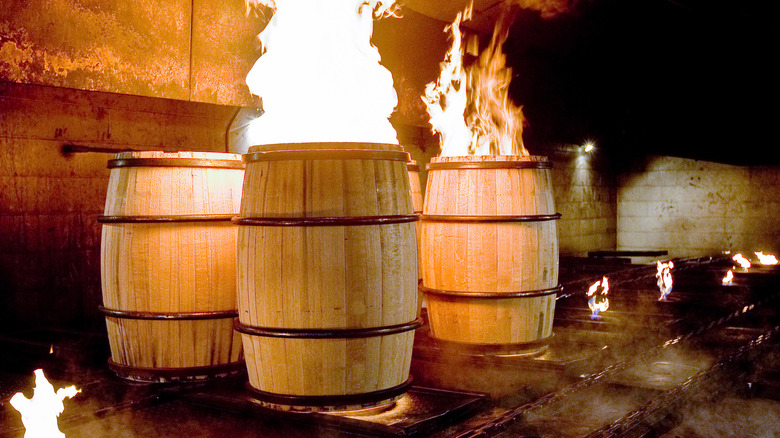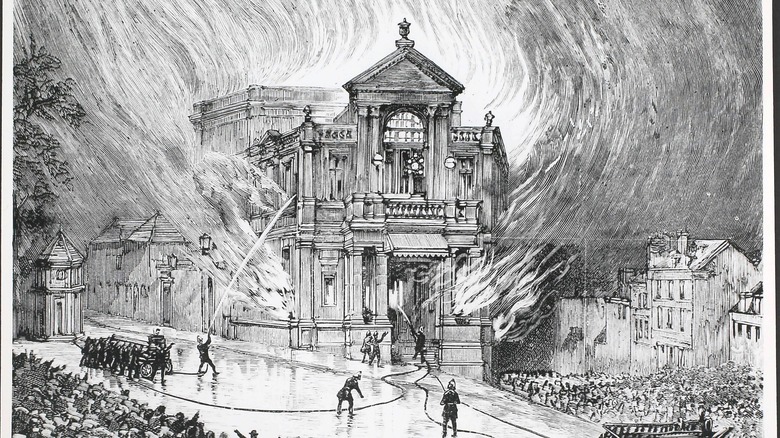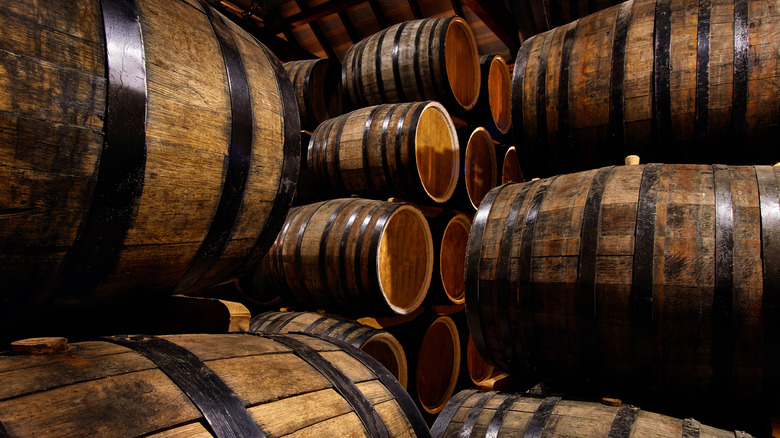The Shocking Story Behind The Great Whiskey Fire Of Dublin
Of all the fires that Dublin, Ireland has seen, The Great Whiskey Fire of Dublin stands as one of the worst. Along with other food-related disasters in history, like Boston's 1919 molasses flood and the 1878 Minneapolis flour mill explosion, this whiskey fire serves as a reminder of the dangers posed by the production of foods and drinks that we take for granted (via Bon Appétit).
According to The Irish Times, the disaster occurred on June 18th, 1875 at Malone's Bonded Storehouse in Dublin, where more than 5,000 barrels of whiskey and spirits were stored in various stages of aging. The storehouse was located in an area known as The Liberties, a part of the city that dates back to medieval times. In the 19th century, The Liberties was home to many large brewers and distilleries like Guinness and Jameson, as well as pubs and other businesses, tenement houses for the working class and poor, and outdoor pens of animals, like horses and pigs (via The Liberties Dublin).
The start of the fire
While experts don't know exactly how the fire started, the inherent risks of distilling whiskey set the stage for disaster. Firefighter Insider says that bottled whiskey meant for retail is less flammable because it gets diluted down to a lower alcohol content. Whiskey in casks is undiluted, high proof, and highly combustible. According to NFPA Journal, volatile alcohol vapors and high temperatures from distillation equipment additionally create conditions where explosions and fire can occur.
The first reports of a fire at the warehouse came at 8 p.m. that night (via The Irish Times). Shortly after, barrels began to burn and explode, while torrents of burning whiskey flowed out of the building down the streets and alleys of Dublin. In a YouTube video from Storymap Dublin, firefighter and author Las Fallon says that the flaming whiskey quickly ignited buildings, forcing people to abandon their homes in a frenzied panic. The author shares that mourners scrambled to move a corpse to safety as flames engulfed one building where a wake took place that evening; pigs and horses ran wildly through the streets after escaping their burning pens. Locals tried to douse the flames with water, but the burning whiskey just floated to the surface.
An ingenious solution to the blaze
The residents in The Liberties area of Dublin, Ireland were at a loss as to how to save their homes or even stop the fire from spreading, but the quick-thinking local fire marshal finally got the disaster under control. The Dublin Fire Brigade was called out that night, led by its founder and captain, James Robert Ingram (via Youtube). Ingram had served as a firefighter in New York City and was adept at finding unconventional fire control methods. The captain knew he had to stop the flow of burning whiskey before his team could try to save any buildings, but water only carried the fire into more streets and homes. Ingram first tried to create dams of gravel and dirt, and he called in members of the army to help with the digging. Despite the valiant efforts of everyone involved, the whiskey soaked through the structure.
Ingram's next idea was unusual, smelly, and incredibly effective. The era of horse-drawn transportation meant that the city had plenty of manure yards. Ingram gathered this manure together to build dams and coat the streets, and fortunately, this method worked. The manure absorbed the burning spirits and extinguished the fire, allowing Ingram's brigade the opportunity to put out the blazing buildings and end the disaster.
The unexpected toll
According to Storymap Dublin, no one died from smoke inhalation or burns — the fatalities directly stemmed from the whiskey that ran through the streets. Even as people were trying to escape the blaze, hundreds more flocked to the area to witness the unbelievable event and to help themselves to free whiskey. People used hats, pots, cups, and any vessel they could find, including their own shoes, to scoop burning whiskey up from the streets. Onlookers didn't realize the toxic strength of the undiluted alcohol and the 13 people who died in the Great Whiskey Fire all perished from alcohol poisoning. Hundreds more were treated for poisoning in local hospitals, with several going blind and suffering brain damage.
British and American newspapers of the time had a field day with the story, playing up stereotypes about the Irish and drinking (via Firecall). To save their reputations, whiskey distillers helped play down these details, turning the focus to residents who tried to help that night.
While this disaster affected all of Dublin, a few positives came out of the fire. Distillers created more safeguards, helped legitimize the Dublin Fire Brigade, and even formed their own fire departments to help guarantee a disaster on this scale could never occur again.



